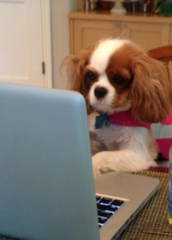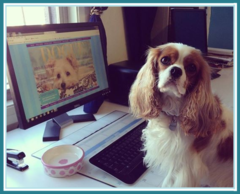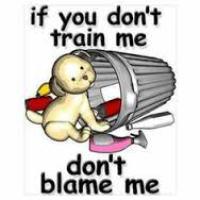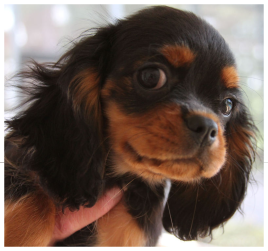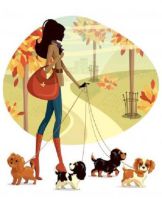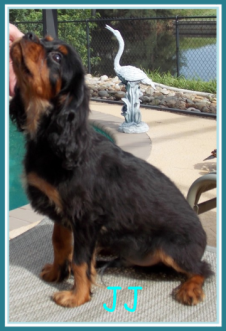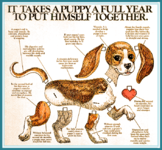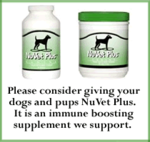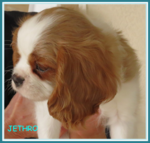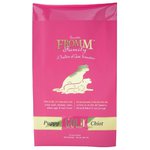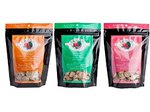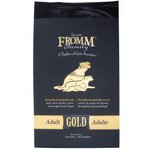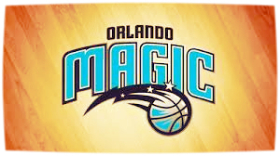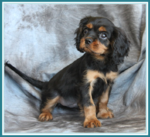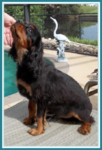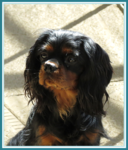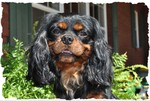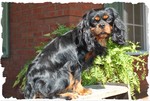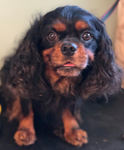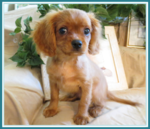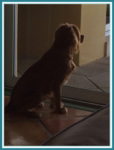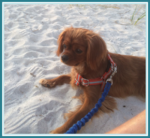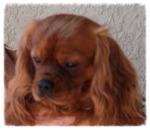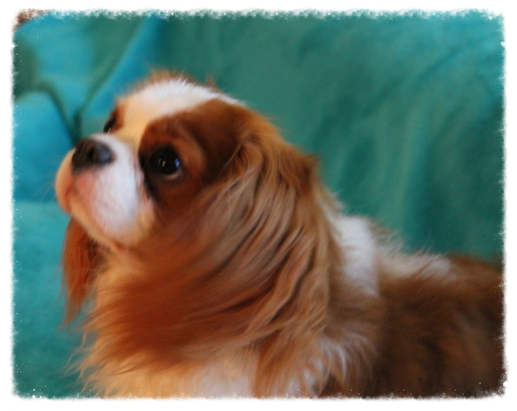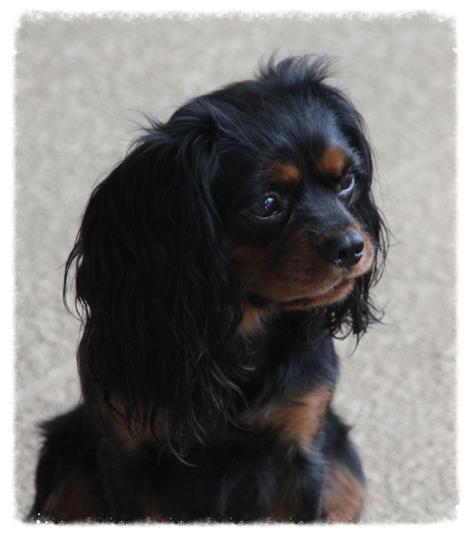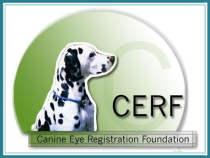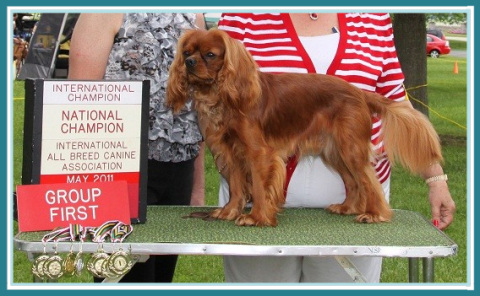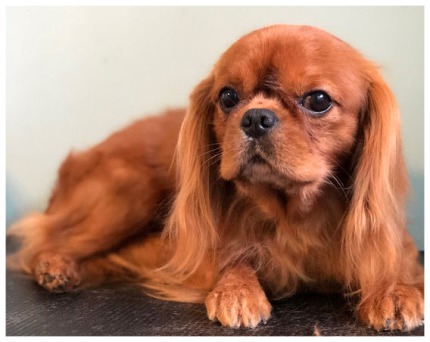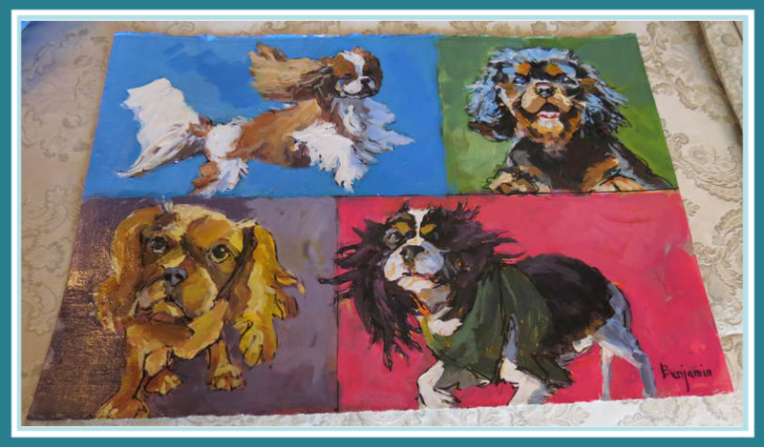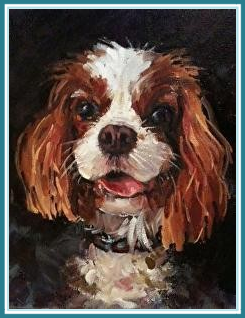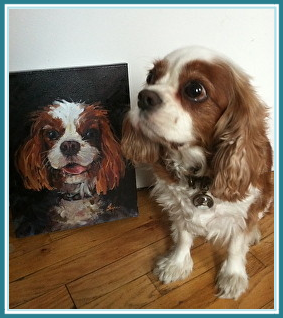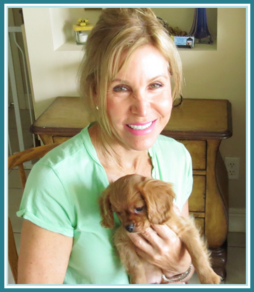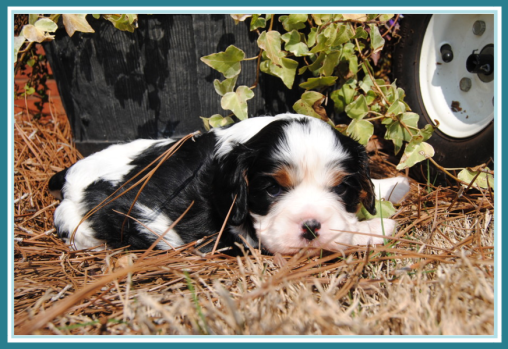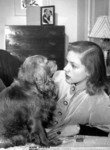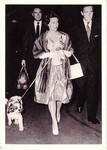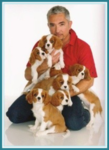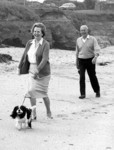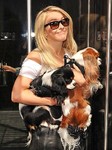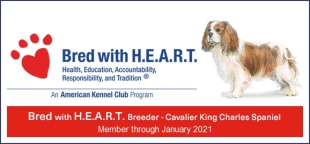"CSJ", THE CHARLES STREET JOURNAL ~ NEWS AND INFORMATION
WARNING!!! DO NOT GIVE THE LEPTOSPIROSIS VACCINE TO YOUR CAVALIER UNDER ANY CIRCUMSTANCES. IT IS DANGEROUS. IT CAN CAUSE SEIZURES. IT CAN CAUSE INCREDIBLE PAIN. IT CAN KILL YOUR CAVALIER. PLEASE HEED THIS WARNING!!! DO NOT GIVE THE LEPTOSPIROSIS VACCINE TO YOUR CAVALIER!!! LOOK UP THE LEPTOSPIROSIS VACCINE, ALSO KNOW AS LD4, SEE SOME OF THE VIDEOS AND READ ABOUT THE RESULTS OF GIVING A DOG THE LEPTO VACCINE. CALL US IF YOU HAVE QUESTIONS, PLEASE. TOO MANY DOGS OF ALL TYPES HAVE SUFFERED SEVERE SIDE EFFECTS FROM THE VACCINE. INTENSE PAIN, VOCALIZATION OF PAIN, SIEZURES, AND SADLY, IN SOME CASES DEATH. DO NOT GIVE THIS VACCINE. BE AWARE, THE 'L' IN THE DHLPP COMBINATION BOOSTER, STANDS FOR LEPTO VACCINE, OPT FOR THE VACCINE WITH THE 'L'.
Not All Veterinarians are Created Equal
Veterinarians, like doctors, should be a good fit for both doctor and (four-legged) patient. If your puppy is scared of your veterinarian before his first shot, you might consider trying a different vet for your puppy. Before choosing a veterinarian, it is always a good idea to check reviews and references of the hospital, be sure to verify that the veterinarian can meet the needs of your dog. Additionally, you should make sure that the vet you choose provides all the services you want from them or can provide a reference for things like rehabilitative care, nail trims or dental services, and alternative care. It’s important to know what your vet will provide.
5 Things to Stop Saying to Your Dog, According to Trainers & Vets
1. “No!”
Why it’s problematic: Saying, “No,” to your dog is too vague. Which behavior are you trying to stop? Urban Dog Training in Brisbane uses the example of a dog quietly chewing a shoe. “No” could be referring to the lack of barking, the chewing or the spot where your dog is sitting. It’s impossible for your dog to distinguish which one you mean. More importantly, the word “no” doesn’t tell your dog what you want her to do instead. Alternatively, commands like “drop it,” or “sit,” identify a specific behavior your dog can exhibit instead of what she’s doing. Urban Dog Training adds that saying “no” can reinforce bad behavior because you are giving the dog attention—even if it’s bad attention.
2. Yelling (in general)
Why it’s problematic: Animal Behavior College notes dogs do not have the same logic and reasoning capabilities that humans do. Shouting or yelling at your dog can fill them with fear—of you, of their environment, of certain behaviors—and even lead to reactive behavior. Again, yelling and scolding in an angry tone is too vague. Screaming at your dog won’t prevent her from chewing the shoe next time. She’ll simply do it where you can’t see her. Studies have shown canines can actually become pessimistic when treated this way.
3. “Come!” (When it’s bad news)
Why it’s problematic: Calling your dog to “come” when it’s time for a bath, a trip to the vet or any other unpleasant experience links that command with, well, an unpleasant experience. It’s like the boy who cried wolf: If you trick your dog too many times into thinking she’s getting a treat when really she’s about to have her anal glands expressed, she’ll stop coming when she’s called. She may not even trust other commands you throw around. Instead, use reward-based training when establishing these practices. Vet trips can be associated with a special treat, like doggy ice cream. Baths can become an opportunity for a peanut butter-filled Kong toy. But don’t trick her.
4. “Down” (When your dog learned “drop”)
Why it’s problematic: So you’re trying to communicate to Roxy to drop the matchbox from her mouth. But in the chaos of the moment, you say “down,” as in, “put it down!” Even it’s not intentional, sending mixed signals isn’t great practice. Canine Perspectives, a notable dog training and daycare facility in Chicago, says providing structure and consistency is key to building good habits. Canines thrive on routine and enjoy having guidelines to know what to do in new situations. Once you teach a command, use it regularly and in as many different locations as possible. This is called proofing; it ensures your dog remembers and obeys commands in any situation and can be lifesaving. If your dog eats something poisonous on a walk, she better be able to obey “drop it!” outside the home. Because of their affinity for rules, don’t mix up commands on them. Sure, to us the words “down” and “drop” mean pretty much the same thing. To dogs? It’s very confusing.
5. Nothing
Why it’s problematic: On the flip side, ignoring problem behavior is equally detrimental. It may work at home in a controlled environment, but Dr. Jennifer L. Summerville, DVM, says the instant your dog receives any type of reward for that behavior, ignoring it no longer proves effective. Plus, in the real world, other people probably won’t be able to ignore behavior like jumping, chewing or whining. Teaching your dog specific commands (sit, stay, drop it, down) will help you redirect problem behavior and help your dog understand what it is you’d like them to do.
One of the things that makes dogs so special is the myriad ways in which they manage to communicate with you. There’s the way they stare at you when you’re eating dinner, the speedily wagging tail when you come home after a long day, and the goofy grin they give you when that belly rub truly hits the spot. But why dogs smile actually has more meaning than you might think.
According to the experts at the ASPCA, a dog’s smile can be characterized as a display of the front teeth, normally paired with a lowered head, wagging tail, flattened ears, a “soft body posture,” or squinty eyes.
While a dog’s smile could indicate that they feel happy around you, according to the experts, in most cases, it actually means that they are showing their submission to you. In fact, according to doghealth.com, a dog’s smile is merely a gesture of appeasement or nervousness as they attempt to tell you that they like you enough to give you full control over their well-being. In other words, they are indicating, through that smile, that they will not challenge your authority because they like and trust you.
Aside from communicating a sense of fulfillment, a dog can also learn to smile from you, a phenomenon called laughter contagion. In most cases (whether or not you take notice), your canine pal will often reciprocate your own smile at the moment, grinning back at you to communicate the fact that they consider you a companion.
However, be careful: a showing of teeth could also be a sign of aggression, especially when paired with an erect body and growl. In order to save face (literally), be sure to study your dog’s body language before going in for that belly rub.
If you’re still wondering how to tell whether or not your pup is truly happy, key clues about their contentment will nearly always lie within their posture and body language. Normally, when a dog is happy, their posture remains relaxed—meaning their eyebrows don’t arch with anxiety and they blink often. Your canine friend might even trust you enough to expose their belly or lean into you when you pet them.
At the end of the day, it’s important to remember that a dog’s smile doesn’t usually mean that he or she is happy or content—it’s just an attempt to communicate that they approve and respect your authority over them. So, be happy—your dog understands more about your complex relationship than you ever imagined.
Why Do Dogs Stare at You
I am in need of something
The biggest reason why dogs stare at their owners or other people is because they want something from them. This can be a material object such as a toy, food, and treats or just a little bit of attention and affection shown by the human. Petting the dog on the head might just do the trick! Dogs often stare when they want to take a walk and enjoy the outer world.
Because they are intelligent beings, dogs learn quickly that it’s okay to ask for something. You might not know, but you already contributed to this behavior by giving him treats or toys earlier in life while he was staring at you. It’s just hard to resist all that cuteness. Basically, you trained your dog to stare by fulfilling his desires while he is staring.
Tilted head stare
A dog staring with his head tilted means that he is confused. This happens a lot when you are training him. It means that the dog is trying to figure out what you want from him, but has a hard time doing so. The situation asks for a change of training techniques; back-track the training process in order to find a mutual language to communicate more clearly.
For example, if you ask your dog to lie down and he stares at you it means you haven’t done your job well and the behavior needs to be re-trained. The pup isn’t being disobedient, just confused a bit.
A tense, direct stare
Hard eyes and a direct stare are bad signs! This usually happens when the dog is tense and plans on doing something bad (ex. bite). It’s a warning sign so be careful when you are aware of this type of stare. Tense stare can be easily confused with other types of stare. So watch out for other accompanying signs. Dogs that plan to attack have a stiff tail, closed mouth, wide pupils, pinned ears, still body. These signs come in combinations and you cannot see all of them at once.
Loving eyes
A soft eye is the best stare your dog can give you. Their gaze is relaxed and accompanied by light panting, normal pupils, relaxed ears and a sweeping tail wag.
ENJOY THIS TYPE OF STARE BECAUSE IT'S EXCLUSIVELY FOR YOU.
DOG PARKS
I don’t recommend dog parks. Not ever. The list of things that can go wrong is so long that it completely outweighs the possible attributes; note I say “possible,” because the positives
are, in my opinion, only theoretical.
First, dog parks are rife with disease, especially giardia. Soft stool, diarrhea that comes and goes, horrible gas?
Have your vet run a test for giardia. And then, of course, there’s kennel cough, as well other fungi, viruses, fleas and worms.
Second, I have seen way, way too many dog bites that have occurred at dog parks for my personal comfort. Mostly to other dogs, but also to people who reach in to break up a dog fight or a to
grab their dog out of harm’s way. Even though signage clearly says “Enter at your own risk” and admonishes entrants that the liability they’re undertaking is their own, lawsuits more than often
ensue. They’re never simple, they’re always stressful and it may threaten your homeowner’s insurance coverage in the future.
But let’s look at it from a dog’s point of view. Dogs thrive on stable relationships. Notice I did not say “pack!” They set up and like to maintain relationships with things that they know:
their people, our human friends, their dog friends, their housemates, etc. Unless there are the exact same dogs every time they go to the dog park (which is nearly impossible), they have to
re-establish their relationships with not only the dogs they already know in context of the new dog present, but they also have to establish a relationship with that specific new dog. Some
dogs can handle the stress of this--but most cannot. Thus you’ll get what appears to be random fighting, random aggression towards a dog they know, random odd behaviors (“gee, never done
that before”), seemingly sudden guarding behaviors (territory, owner, another dog) etc. It’s not random or unpredictable--it’s the stress you, as an owner, causes by going to the dog park! Dog parks
require skills that most dogs do not possess, nor would they according to how we have bred them for hundreds of years.
Lastly, I’m very wary of the “unknown” factors. Unknown dogs, unknown owners, unknown relationships and interactions, unknown damages. I don’t like surprises, and dog parks hold way too many unknown
factors for dogs’ safety.
One of my main reasons for not being a dog park advocate is what I can’t control my dog’s experience and/or other people’s dogs (and I think it goes without saying, the dog owners). Because
dogs are learning all the time, I must control as much of their experiences as possible, so that they build a solid foundation of behaviors that are appropriate and desirable, such as
impulse control, bite inhabitation, and exchanging rewarding, affiliative, positive social interactions.
All mammals remember frightening encounters over non-eventful or even fun encounters. It’s a primal survival brain mechanism, designed to keep us alive. Dozens of positive encounters can be
overridden by one bad one; thus I must make sure my dog has only positive experiences for several years, until they are mature and have a solid foundation before I expose them to a possibly
unsure environment.
If your dog gets bullied, attacked, frightened or even just overwhelmed at the dog park, he will bring that experience and the subsequent conclusions he made with him everywhere. The reactions
can vary from “I’m scared and must get away as quickly as possible at all costs” to “If I come on strong and attack first, maybe I’ll be okay,” to just about anything in
between.
Also keep in mind that fighting and bullying in dogs is a learned behavior just as much as anything else, and therefore once your dog does it a few times, it’s now learned and bound to be
repeated over and over again. And make no mistake--many dogs enjoy being a jerk! Your best bet is to not let it start in the first place, whether it’s your dog being the bully or being the
target.
Of course I recommend dog-to-dog play! If your dog has a few friends that he or she really enjoys, please go for it!
Set up play dates, meet somewhere where they can safely run, sprint, wrassle, and jump about. Since dogs generally play in pairs, try for either just the two, or in even numbers, you’ll find it
works out better. Some dogs only want or need a few friends (just like people), and some are social butterflies, and can make friends wherever they go. Pay attention to who your dog is, not
who you want them to be. Stay within your dog’s comfort zone, and you’ll have a happier, safer dog.
So considering all the above, is this something you actually want for your dog? I doubt it! Take your dog for a walk instead.
Training Dogs for Swimming Pool Safety
Is It Safe For Dogs To Swim in Chlorine Pools?
On a scorching day, a dip in a swimming pool can look extremely appealing to humans and animals alike, but is it safe to let you dog swim in a chlorine pool?
Although the chlorine levels in a normal swimming pool are safe for humans to swim in, and occasionally ingest, dogs may be more susceptible to effects of chlorine because their nose, eyes, and ears are more sensitive. Don't let your dog drink from the pool -- even though it may seem like a large water bowl to them -- so have fresh water available.
If your dog does go for a swim, make sure to spray them down after to wash off the chemicals from the pool and give their ears a gentle dab with a towel to dry the insides to avoid infections -- this is especially important for dogs with floppy ears.
Also, make swimming a pleasant experience for your dog by allowing them to take their time entering the water and praising them each step of the way. Never throw a dog into a pool. Toss a toy into the pool or escort your dog over the side to encourage them to enter the water. Many dogs are natural swimmers, so they do not need to be taught how to swim. However, dogs may panic when trying to exit the pool for the first time since they are not used to using ladders or steps made for humans, so help teach your dog how to use these ways to safely get out. Never leave your dog unsupervised in a pool, they may need assistance if they are in trouble and may not be able to bark to get attention.
By keeping your dog safe while swimming, you both can have as much fun as this water-loving pup:
It goes without saying that dogs should be supervised in the pool area at all times. But there’s always the possibility that they could get into the pool area undetected. Falling in the pool could be disaster for a dog who has not been taught how to get out.
Here are some pointers for making sure your dog can make a graceful and lifesaving exit.
- First, carry the dog into the pool, set him gently into the water, and help him swim to the steps. Then reward and repeat several times until he gets the idea. When he makes it to the steps easily, move to next exercise. Make sure to offer abundant rewards—praise or toys. You want the dog to view reaching the steps as a great cause for celebration.
- Turn away from the steps and bring the dog into the pool and guide him lightly around and to the steps. After one or two times most dogs will aim for the steps naturally. Some water-loving breeds may not want to get out, but all dogs need to know how to exit. So be persistent in getting them to reach the goal before you let them free to swim joyously!
- Teach the dog to reach the step from anywhere in the pool by putting him in the water at different points and guiding him to the exit. This is something dogs pick up quickly. The steps are the reward now! Knowing where the steps are eliminates a panic if the dog falls or is knocked into the pool while playing.
Of course, you should always supervise your dogs around water, but by following these easy exercises, you can make sure that your pool parties will be occasions for a lot of wagging, wet tails.
Water Intoxication: Too Much of a Good Thing
- Most dog owners are more concerned about a dehydrated pet than one that is hyper-hydrated. But the fact is some dogs can ingest dangerous amounts of water in a short period of time.
- Water intoxication, resulting in hyponatremia, is a relatively rare but potentially fatal condition that is most commonly seen in dogs that love to play in the water. Retrieving items thrown into the water and competing with other retrieving dogs is one way a pet can ingest a large quantity of water very quickly. Another way is “catching” pressurized water from a garden hose or sprinkler.
- Symptoms of water intoxication include loss of coordination, lethargy, bloating, vomiting, glazed eyes, excessive salivation, difficulty breathing, seizures, and coma.
- It’s important to monitor dogs that are very active in the water, and insist on regular rest breaks. Also take care not to allow your dog to ingest an excessive amount of water from a hose or sprinkler. Dogs that empty their water bowl after hard play or exercise should be rested for a bit before refilling the bowl.
- Hyponatremia is a potentially fatal condition, so if your dog has played in water and shows any symptoms of water intoxication, get him to your vet or an emergency animal hospital immediately.
Responsible dog owners understand the importance of making sure their canine companion always has fresh, clean water to drink. But what a surprising number of pet owners don’t realize is that it’s actually possible for a dog to ingest too muchwater.
Water intoxication, which results in life threatening hyponatremia (excessively low sodium levels), is a relatively rare but frequently fatal condition in dogs. At highest risk are dogs that enjoying playing in the water for long stretches. But believe it or not, even a lawn sprinkler or hose can pose a hazard for pets that love to snap at or “catch” spraying water.
What Happens When a Dog Ingests Too Much Water
Hyponatremia occurs when more water enters the body than it can process. The presence of so much water dilutes bodily fluids, creating a potentially dangerous shift in electrolyte balance. The excess water depletes sodium levels in extracellular fluid (fluid outside of cells). Sodium maintains blood pressure and nerve and muscle function.
When the sodium concentration in extracellular fluid drops, the cells start filling with water as the body attempts to balance the sodium levels inside the cells with falling levels outside the cells. This inflow of water causes the cells – including those in the brain – to swell. The central nervous system can also be affected.
Symptoms of water intoxication include staggering/loss of coordination, lethargy, nausea, bloating, vomiting, dilated pupils, glazed eyes, light gum color, and excessive salivation. In severe cases, there can also be difficulty breathing, collapse, loss of consciousness, seizures, coma, and death.
Dogs Most at Risk for Water Intoxication
Any dog can develop hyponatremia, however, the condition is most commonly seen in dogs who will stay in the lake, pond or pool all day if you let them; pets that lap or bite at the water continuously while playing in it; and dogs that swallow water unintentionally as they dive for a ball or other toy.
The condition has also been reported in dogs that over-hydrate during or after exercise, as well as those that enjoy playing with water from a garden hose or sprinklers.
Water intoxication can affect any size or breed of dog, but smaller dogs probably show symptoms more quickly because it takes less time for an excessive amount of water to build up in their bodies.
Water intoxication progresses quickly and can be life threatening, so if your pet has been playing in water and begins to exhibit any of the symptoms listed above, it’s crucial that you seek immediate veterinary care to save your dog’s life.
Treatment of hyponatremia in dogs typically includes IV delivery of electrolytes, diuretics, and drugs to reduce brain swelling. With aggressive veterinary care, some dogs are able to recover from water intoxication, but sadly, many are not.
Preventing Water Intoxication in Your Dog
If your dog loves the water, make sure you’re there to supervise his activity. If your pet is repetitively retrieving a ball or other toy from the water, insist on frequent rest breaks. Be especially vigilant on days when the water is rough.
Observe how your dog interacts with the water. If her mouth is open a lot – even if she’s holding a ball or stick in it -- understand that she’s likely ingesting a fair amount of water. The same can be true of dogs that dive to the bottom of a pool to retrieve items.
Familiarize yourself with the symptoms of water intoxication and monitor your dog’s appearance and behavior when she’s playing in water.
After a period of hard play or exercise, use caution when your dog rehydrates. If he immediately laps up the contents of his water bowl, rest him for a bit before you refill his bowl. If your dog is very active, it’s a good idea to have water with you when he exercises so that you can give him frequent short water breaks to keep him hydrated.
If your dog enjoys interacting with water from the hose or sprinkler, you should monitor that activity as well. Water from a hose or sprinkler is under pressure, and you’d be surprised how much a dog can ingest in a short amount of time.
A Word About Salt Water Toxicity
Excessive intake of salt water can result in hypernatremia, or salt poisoning, which is the opposite of hyponatremia. Initial signs of hypernatremia include vomiting and diarrhea, but the condition can quickly progress to neurologic symptoms like loss of coordination, seizures, progressive depression, and severe brain swelling.
Hypernatremia, like hyponatremia, is potentially life threatening, and immediate veterinary care is needed.
If you take your dog to the beach, bring along fresh drinking water and offer it to him at frequent intervals so he won’t be tempted to drink ocean water.
Please don't take your dog everywhere
Not all dogs are happy at public events.
Whether it's a farmers market or a summer art festival, when the weather warms up, people head outside. And when they go outdoors, many people take their dogs. But while plenty of pups are happy to browse the produce stands and mingle with hundreds of strange people and their pets, there are many who are stressed by the adventure.
Some owners just assume that if they're having fun, their dogs are happy, too. But not all dogs love the noises and smells, people and activity that come with going to outdoor events or restaurants. They get nervous and maybe even cranky when faced with scary or new situations.
Ask yourself a few questions before snapping on the leash and taking your pup with you:
- Will my dog be comfortable at the event or would he be happier at home?
- Can I be sure my dog won’t react aggressively if a stranger rushes up to him?
- Can I make sure my dog won’t get into something like dropped food or trash?
- Even though my dog is harmless, could he scare little kids because of his size or looks?
- Will it get too hot for my dog if I can’t find a spot in the shade?
Tips for a good outing
If you decide to take your dog to a public event, it's key to set him up for success.
First up, don't use a retractable leash.
"There is hardly any control with these leashes, and in high activity environments you need all the control you can get. For the sake of all other dogs and owners at the event, I encourage you to stick to 4′ or 6′ standard leashes."
Then, make sure to stuff your pockets with treats.
"I understand that shoving a bunch of treats in your dog's mouth won’t solve real problems, but it can sure help manage some when you’re out in a distracting environment. Oftentimes when there is an overwhelming amount of stimuli, your dog will only pay attention to you if you’ve got something they want: yummy food. In new environments it is essential to be able to capture your dog’s focus. Treats will help enormously for this, especially if they are high value."
Pick and choose
Just be smart about when your pet tags along.
"Over time, I’ve learned that your life has to be 100 percent dog-friendly if your dog is going to tag along 100 percent of the time. And precious few of our lives are that accommodating.
"There’s no point in taking your dog to a restaurant if he doesn’t have the temperament for it, won’t enjoy it or if it will cause a lot of disruption. But smaller, well-behaved and socialized dogs may be just fine."
Look for signs of stress
Wherever you go with your pup, it's key that you always pay attention to him. That's not only so his leash doesn't get tangled in a stroller, but it's primarily so you can sense his mood.
Be aware of the signs and symptoms of stress so you know when it's time to take off. Here are some of the most common things to look for.
- Yawning
- Nose or lip licking
- Pacing or shaking
- Whining, barking or howling
- Pulled or pinned-back ears
- Tail lowered or tucked
- Cowering
- Panting
- Diarrhea
- Avoidance or displacement (focusing on something else like sniffing the ground or turning away)
- Hiding or escape behaviors (hiding behind you, digging, running away)
If you notice any of these stress signs, take your dog home or at least give him a break from all the activity.
"Dogs are extremely sensitive and can go from being fine to absolutely not fine in a matter of minutes. It is essential that you stay in tune to how your dog is reacting to other dogs or people, and the minute things start getting hairy, you skedaddle. Your dog might not necessarily need to leave all together, but a time out away from all the hubbub can really help a dog’s mentality."
NUTRITION....CLICK ON PICS FOR LARGER IMAGE
5 Common Dog Illnesses That Are Impacted by Nutrition
When it comes to diet for our dogs, there are countless options available. Canned foods, kibbles, raw foods, dehydrated foods—the possibilities and brands offered are essentially endless. Owners shouldn’t focus on brands or types, but on quality of nutrition in the foods available. This is because proper nutrition is one of the most important aspects of life, including the lives of our dogs. Adequate food and nutrition help keep you dog active and happy while preventing many ailments associated with a poor diet. In fact, some of the most common problems veterinarians see today are related to a lack of quality nutrition. Remember that what works for one dog may not work for the next, so do your own research (start with speaking with your breeder and veterinarian) and do not base your choice on what everyone else is feeding.
If your dog suffers from any of these conditions, you might want to start looking at his diet.
- Obesity - Obesity is a growing problem in dogs around the world. Looking at the calorie content of your dog’s food will help you determine
if your dog is eating too much. Many owners find that following the recommended serving sizes on their food’s packaging often leads to a very overweight dog.
Consider how active your
dog is and what type of ingredients are making up the calories in his food. Working and active dogs are going to need a lot more calories than your average pet. Many ingredients, such
as corn and soy, are often packed with calories, but offer little to no nutrition—therefore making it necessary for your dog to consume more food in order to get enough vitamins and minerals. This
leads to an increase of calories, which leads to obesity.
- Poor Skin and Coat Condition - The skin is the largest organ of the body for all animals and is affected by nutrition. A diet that is
lacking essential fatty acids is going to quickly be reflected in your dog’s skin and coat condition. Dull, brittle coats and dry, flaky skin may be signs that your dog isn’t getting enough
nutrients. Other causes are allergies and endocrine, such as thyroid. The omega-3 fatty acids that your dog is most commonly deficient in are those found in fish and flaxseed oils. Fortunately,
adding these essential fatty acids is becoming a popular trend in foods, so a deficiency is becoming less common. Still, if your dog is showing poor skin and coat
condition, you might want to look at the food he's eating and consult with your veterinarian.
- Reduced Immunity - A lack of proper nutrition means your dog’s body isn’t getting what it needs to function at the highest level. One of
the first things to begin suffering is the immune system. You might see this appear as wounds that don’t heal, infections that take longer to clear up, or even allergies. While your dog may be
allergic to some of the ingredients in his food, it’s also likely that he will become sensitive to environmental
allergies. The immune system will struggle to control a yeast or fungal infection on its own, leading to an increase in hot spots and ear infections.
Some owners have claimed that a change in diet has alleviated environmental allergies in their dogs by strengthening the immune system.
- Pancreatitis - Pancreatitis is a very serious condition that may be related to a poor diet. This inflammation of the pancreas leads to the
leakage of digestive enzymes, causing the pancreas to begin digesting itself. There are acute and chronic forms, both related to poor diet, and both are life-threatening conditions. Dietary fat is
known to be associated with pancreatitis in
dogs, and that’s why we often see the acute condition after a dog gets table scraps of bacon or other high-fat foods. A diet high in unnecessary fats from grains is also thought to
contribute to chronic pancreatitis. Veterinarians have found that the more processed the foods, the higher the potential risk of pancreatitis in dogs.
- Diabetes - Just like in people, diabetes in dogs is often associated with a poor diet. Diabetes mellitus is the type most often seen in dogs and is often a genetic condition. It may also be a secondary condition related to improper nutrition. Diabetes has many causes, but is often triggered by obesity and chronic pancreatitis—both related to the quality of diet consumed by the dog. Although diabetes cannot be cured, it can be controlled with insulin injections and a strict diet. Avoiding foods that contain complex carbohydrates, such as corn, soy, rice, breads, and other grains, will help reduce the risk for diabetes and help manage it should your dog be diagnosed.
Canine Nutrition
Is your Cavalier King Charles Spaniel Overweight?
Weigh your pet regularly. The easiest technique for weighing your dog at home is to step on your scale alone first. Then, holding your dog in your arms, step on the scale for a second time. The difference in the two measurements is the weight of your dog.
Adult Cavalier Spaniels generally weigh 13 to 20 lbs, but keep in mind every dog is different. How can you judge whether your Cavalier Spaniel is at a healthy weight? Take a good look at your dog (from above, i.e. an "aerial view") and follow these guidelines:
| Thin | If your dog’s ribs are noticeable to the eye and too easily felt, and if his waist below the ribs is pronounced, then your pet is too thin. |
| Ideal Weight | You won’t generally see your dog’s ribs if he is at his ideal weight, although you should easily feel them through only a slight layer of fat over your dog’s ribs. Your dog should have only minimal abdominal fat and his waist should be noticeable. When looking at your pet from above, he’ll have a pleasing hour glass shape. |
| Overweight | If your pet is overweight, you won’t be able to see your pet’s ribs or easily feel them because of the moderate layer of fat over his ribs. His waist will not be particularly noticeable due to more than necessary abdominal fat. |
| Obese | In an obese dog, you won’t be able to see or feel his ribs at all. Abdominal fat will be heavy and your dog won’t appear to have a waist as his abdomen will be distended. |
The best medicine is always prevention. Your goal should be to keep your dog from becoming overweight in the first place.
Whenever you notice your pet starting to look a little “chunky”, it’s time to adjust his eating routine.
- Take your dog for a few extra walks everyday.
- Cut back on the number of treats you give him or substitute lower-calorie alternatives.
- Switch your Cavalier to a dog food especially formulated for overweight dogs.
- Take him to see your Vet to rule out the chance that a medical condition may be responsible for your dog’s obesity.
While you can use the food guidelines provided by the pet food manufacturer as a starting point, you need to customize the amount of food to your dog's situation. Remember, the pet food manufacturer doesn’t have any idea how active your dog is, or how many treats you give him during the day.
Be patient. Finding the right quantity of pet food and treats for your dog requires a little trial and error on your part to find the right combination for your favorite Cavalier Spaniel.
Types Of Allergic Reactions In Dogs
What does “allergy” mean to you? Does it mean a life-threatening reaction to a bee sting? Does it suggest an itchy dog? Hives? All of these are examples of the many different types of allergic reactions. Learn how to manage each one.
Anaphylactic Reactions in Dogs
Have you ever heard of a person dying after eating one shrimp because he was deathly allergic to seafood? Or someone having to inject himself after being stung by a bee? These are anaphylactic reactions, the scariest and most lethal allergic reactions we see.
In dogs, we see major reactions like this if they are bitten by an insect (bee or wasp) or if they have an injection of medication (like a
vaccine) they’re allergic to. Antibodies produced by the host react to the substance, dropping blood pressure and sending the body into shock. If a dog has had
a past incident and survived, the owner may carry an epipen, but sometimes the first occurrence can lead to death. Fortunately these reactions are very rare in dogs.
Facial Swelling and Hives in Dogs
If a dog has swelling of the face, what vets call angioneurotic edema, this is actually a good sign. I say this because the dog has likely passed the time for a fatal reaction to occur, and his life is rarely in danger. The swelling occurs 30 minutes to a few hours after the exposure. A veterinarian will often give dogs with this reaction an antihistamine injection. Untreated, it may take a day or two for the swelling to subside.
A different reaction we see 6 to 24 hours after exposure to the antigen is hives. Also called urticaria, this reaction consists of very itchy swellings in the skin. These are easy to spot in short-coated dogs, but with dogs with long hair, you may be more likely to feel them rather than see them. An antihistamine is again in order to treat the reaction.
Skin Allergies In Dogs
Dermatitis from fleas is the easiest to treat. In these cases, the dog reacts to saliva injected into the skin as the flea feeds. It’s like having mosquito bites all over you. The key with this type of allergy is that the itch is more intense over the tail head. You usually see fleas, or you may find flea dirt, which looks like black pepper on the skin surface.
We treat these cases by applying a product that kills fleas before they bite. I’ve seen dogs that have had horrible red skin covered in scabs, and a week after a flea medication is applied, they are healing beautifully.
In an atopic allergy, the dog reacts to airborne allergens such as pollen, molds, fungus, and house dust. These are often seasonal, meaning that the dog itches only at certain times of the year. The itch can be anywhere on the body, but it is common for affected dogs to scratch their ears or lick their paws.
Food allergies are reactions to foods, specifically ingredients in the food like corn or chicken. The symptoms are the same as atopic allergies.
There are several possibilities why food allergies develop. Some dogs have a genetic predisposition to developing allergies. The same holds true for atopic allergies. The other contributing factor to food allergies is constant exposure to the same ingredients. For example, if you have continually fed a lamb and rice diet, the prolonged exposure to those ingredients can cause intestinal inflammation and what we call “leaky gut syndrome,” in which the antigen is absorbed through the permeable gut lining. The reaction manifests in the skin, creating the itch. Rotating foods can help prevent allergy development. Common foods to trigger skin allergies including grains (e.g., corn, wheat, rice, barley, oats) and chicken.
To determine which food is causing an allergic reaction, we begin with an elimination trial. We take every food ingredient the dog is currently eating out of the diet and offer a food containing ingredients the dog has never had. So, if you were feeding a lamb and rice diet, a logical choice could be salmon and potato. Of course, all treats and snacks are avoided because they can be creating the reaction as well. We feed the new diet exclusively for at least six weeks before we determine if it is working.
Another thing we can do for dogs with atopic or food allergies is to add an omega-3 fatty acid source to reduce the skin inflammation. Salmon oil, slowly introduced to achieve a dose of 1,000 mg for each 10 pounds body weight is the standard. In severe cases, medication can be added, and your veterinarian is the best source for advice on this.
As you can see, allergies show up in different ways. Some are life-threatening and can cause death in minutes. Others, although less serious, are a source of considerable frustration. Each is treated differently—speak to your veterinarian about the best medical solution.
KATIE AND JOHN HENRY ARE PROUD AND EXCITED TO ANNOUNCE THEIR LITTLE SON ZEUS HAS SIGNED WITH THE ORLANDO MAGIC !!! ZEUS'S FOREVER HOME WILL BE WITH VICTOR O. 5/15/15
APOLLO WAS ADDED TO THE TEAM OF ZEUS AND VICTOR . APOLLO'S PARENTS CONSUELA AND GEORGE ARE VERY PROUD! 3/09/16
VICTOR IS NOW WITH THE INDIANA PACERS
FANTOM VAL'S BLACK JACK ~ JJ BORN 3/02/2012
JJ WILL BE LIVING WITH MY FRIEND & MENTOR HOLLY IN THE BEAUTIFUL STATE OF GEORGIA!!! ALL OF US HERE AT CAVALIERS-BY-VAL WISH THE VERY BEST FOR HIM AS HE ENBARKS ON HIS NEW ADVENTURES !!!
AS OF 08/17/14, JJ HAS NOW FATHERED THREE BEAUTIFUL LITTERS, AND HAS BEEN SHOWN IN ATLANTA. THE FIRST TIME OUT JJ WAS AWARDED AN INTERNATIONAL GRAND CHAMPION TITLE TO ADD TO HIS ACCOMPLISHMENTS. HURRAY FOR JJ!!!!
ELLIE & BURKE ARE PARENTS OF JJ
2/5/18...YIPPY SKIPPY! JJ CAME HOME TODAY! HE IS A INTERNATIONAL CHAMPION. HE IS ALSO OFA CARDIAC,PATELLA CERTIFIED, CHIC CERTIFIED AND CERF EYE CERTIFIED.
JEFFERSON ~ BORN 2/20/2013
JEFFERSON FOUND HIS FOREVER HOME WITH KAREN AND MARK OF NAPLES, FLORIDA ON 5/24/13. WE HERE AT CAVALIERS-BY-VAL ARE VERY PROUD OF JEFFERSON HE IS A THERAPY DOG !!!
JOHN HENRY & RUBY TUESDAY ARE PROUD PARENTS OF JEFFERSON !!!
THE CAVALIER COMES IN FOUR GORGEOUS COLORS
Blenheim (pronounced "Blen-um"), Tri Color, Black & Tan, and Ruby. Blenheim and Tri Colors are known as the parti colors. While Black and Tan and Ruby’s are known as whole colors. Blenheim is the most popular and common color with Tri’s being second in popularity. Whole colors which are the Black and Tan and Ruby are not as common and can be harder to find. All four colors carry the same sweet loving Cavalier disposition that is so admired in the breed. Which is your favorite color? It can be very hard to choose as each is so beautiful.
Nicknames Cav, Cavalier, Cavie
Country of origin United Kingdom
Weight Male 13–18 lb (5.9–8.2 kg) Female 13–18 lb (5.9–8.2 kg)
Height Male 12–13 inches (30–33 cm) Female 12–13 inches (30–33 cm)
OUR CAVALIERS ARE TYPICALLY 12-16LBS
Blenheim Cavalier
FANTOM VAL'S GENTLEMAN JETHRO
Rich chestnut markings, well broken up on a pearly white ground. Ears are covered in red chestnut which also surrounds both eyes. The color is evenly spaced on the head with a white blaze in-between their eyes. Some Blenheim’s also have the desirable lozenge, “queen’s kiss” or Blenheim spot on the top of their head. Blenheim coloring will richen with age. Some beauty marks/freckles may develop within the first year as well.
- A Blenheim bred to a Blenheim you will always only receive Blenheim puppies. The genetic make-up of a Blenheim is ee:ss. Blenheim is the easiest color genetic make-up.
- Blenheim bred to a Tri Color can produce either Blenheim or Tri Color puppies.
- Blenheim bred to Black and Tan can produce all four colors with some white mismarking’s possible on the whole color puppies. While this would not be ideal for show standards it can be adorable on pet puppies. White mis-markings are normally found on the chest, center of face and paws and may diminish with age.
- Blenheim bred to a Ruby either Ruby or Blenheim colored puppies are possible and some white mismarking on the Ruby colored puppies is possible.
Tri- Color Cavalier
FANTOM VAL'S TRUBORN GENTLEMAN
Jet black markings broken up on a pearly white background, with rich tan markings over the eyes, on the cheeks, under side of ears and underside of tail. The ears are black and black also covers both eyes. Color is evenly spaced on the head with a white blaze between the eyes. Of the four colors the Tri color markings will change the most. The black will always grow in on the white. The Tri's white blaze must be very broad at birth if you want your puppy to have a blaze as an adult. As the blaze fills in many Tri's lose their blaze entirely by their first birthday. The wider the blaze at birth the wider as an adult. Some beauty marks/freckles may develop within the first year as well.
- When you breed Tri Color to a Blenheim you can receive both Tri Color or Blenheim.
- Tri Color to Tri Color you will most likely receive all Tri Color unless both parents are Ee:ss, and in this case you can receive both Blenheim or Tri Color
- Tri bred to a whole color can produce all four colors with the possibility of white missmarking’s.
Black and Tan Cavalier
FANTOM FORTRESS CHARMER
Jet black with rich tan markings over the eyes, on cheeks, inside ears, on chest, legs, and underside of tail. The genetic combinations for Black and Tan's are very complicated.
- When bred to a Blenheim or Tri they can produce all 4 colors.
- Black and Tan to another Black and Tan all Black and Tan's
- Black and Tan to Ruby and only Black and Tan's and Rubies can be born.
Mismarking’s do diminish with maturity. How much white will remain in adulthood depends on how much was there at birth. Small amounts of white on the chest will most likely disappear with age while a large amount some will remain. White on the feet tends to stay.
Ruby Cavalier
FANTOM VAL'S SIRE JOHN HENRY
The Ruby is a solid whole-colored rich red with No white.
- A Ruby to Ruby breeding all Ruby puppies
- Ruby to Black and Tan both whole colors
- Ruby bred to a Tri Color can yield all four colors. With possible white mismarking on Ruby and Black and Tan puppies.
- Ruby bred to a Blenheim can yield both Ruby and Blenheim colored puppies with possible white mismarking on Ruby puppies. Breeding a Rudy to a Blenheim can also greatly increase the richness of the Blenheim puppies coloring.
THE OFA IS A NOT-FOR-PROFIT FOUNDATION WITH THE MISSION TO PROMOTE THE HEALTH AND WELFARE OF COMPANION ANIMALS THROUGH A REDUCTION IN THE INCIDENCE OF GENETIC DISEASE. THE OFA CURRENTLY MAINTAINS THE WORLD'S LARGEST ONLINE, PUBLICLY AVAILABLE DATABASE OF CANINE HEALTH SCREENING RESULTS.
OFA EYE CERTIFICATION REGISTRY EXAMS ARE OPHTHALMIC EXAMINATIONS, PERFORMED BY AMERICAN COLLEGE OF VETERINARY OPHTHALMOLOGISTS (ACVO) DIPLOMATES, TO ASSESS DOGS FOR THE PRESENCE OR ABSENCE OF OBSERVABLE HEREDITARY EYE DISEASE. DOGS WITH NORMAL EXAM RESULTS WILL RECEIVE OFA EYE CERTIFICATION NUMBERS VALID FOR ONE YEAR. EYE CERTIFICATIONS ARE AN IMPORTANT PART OF THE ROUTINE HEALTH SCREENING PRACTICED BY RESPONSIBLE DOG BREEDERS TO PRODUCE HEALTH PUPPIES. THE OFA'S ECR HAS THE FULL SUPPORT OF THE ACVO.
THE CANINE HEALTH INFORMATION CENTER, ALSO KNOWN AS CHIC, IS A CENTRALIZED CANINE HEALTH DATA BASE JOINTLY SPONSORED BY THE AKC/CAININE HEALTH FOUNDATION (AKC/CHF) AND THE ORTHOPEDIC FOUNDATION FOR ANIMALS (OFA).
WESTMINSTER 2013 NEWS
CH. B&B'S SIR TOBIAS BRAGG TOBY ~ OWNED BY HOLLY, MY MENTOR AND FRIEND
FANTOM VAL'S GORGEOUS GEORGE ~ SON OF ELLIE & JOHN HENRY, GRANDSON OF TOBIAS
TERESA BENJAMIN ~ FINE ART ~
CALL OR EMAIL TODAY FOR MORE INFORMATION ~ GREAT OPPORTUNITY FOR A BEAUTIFUL OIL PORTRAIT OF YOUR PET !!!
benjaminart@me.com 239-207-2565
PET PORTRAIT COMMISSIONS ~
Please contact me if you would like to discuss commissioning me to do an oil portrait of your pet painted in the style of Bogie, my King Charles Cavalier
RUBY TUESDAY & JOHN HENRY'S ~ HENRY ~ BORN 2/20/2013 FOUND HIS FOREVER HOME WITH TERESA 4/27/2013 !!!
RECOMMENDED BOOKS :
THE CAVALIER KING CHARLES SPANIEL IN FACT AND FANCY BY BARBARA GARNETT-WILSON
THE COMPLETE GUIDE TO CAVALIER KING CHARLES SPANIELS BY JORDAN HONEYCUTT
THE CAVALIER KING CHARLES SPANIEL: AN OWNER'S GUIDE TO A HAPPY HEALTHY PET/ NORMA MOFFAT
PAWS FOR THOUGHT, PAWS FOR PASTA, PAWS FOREVER/ MAUREEN MELVIN AND ILLUSTRATED BY GEOFF CROOK
DOG OWNER'S HOME VETERINARY HANDBOOK BY DELBERT G. CARLSON, D.V.M. AND JAMES M. GIFFIN, M.D.
The Cavalier King Chalres Spaniel is an elegant, energetic toy breed that is compatible for city or country life. Successful in conformation shows, obedience and agility, they also make wonderful therapy dogs due to their sweet, gentle natures. The Cavalier has even been in the White House, President and Mrs. Reagan owned a Blenheim Cavalier. Other noteables who have Cavaliers in their lives are Diane Sawyer, Sylvester Stallone and Frank Sinatra, ole' blue eyes himself. Their silky coats come in four colors. Blenheim (chestnut and white), Tricolor (black, white and tan), Ruby (solid red) and Black and Tan. No one color is better than or valued more than another---it is simply a matter of preference. Average size: 12 to 13 inches tall at the shoulder and between 13 and 18 pounds. Average life span is about 10 - 12 years. Environment for the Cavalier: Apartment and/or large estate. The Cavalier is somewhat active indoors. Be careful of hot or cold climates. Exercise: The Cavalier is adaptable in their need for exercise, happy with either sleeping on the couch or taking long walks. Temperament of the Cavalier: Friendly and easy to train, the Cavalier is a trustworthy companion.



